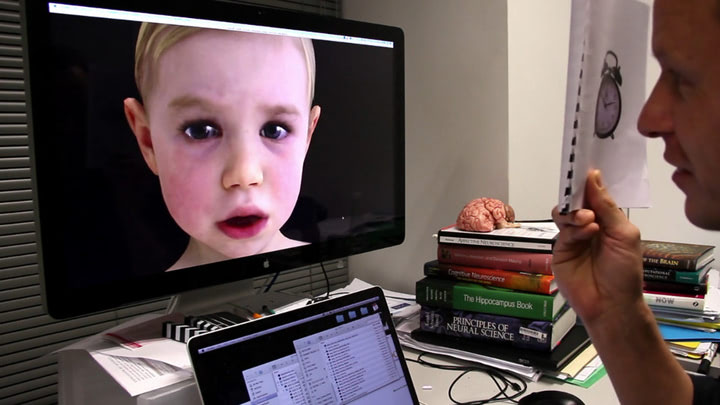A rosy-cheeked kid learns her first words, cries when her babysitter leaves, smiles when she’s happy, but she’s not real. BabyX is an AI research-in-progress by a company named Soul Machines.
Combining models of the brain with models of the face, they are designing embodied interaction. By doing that, Soul Machines' CEO Mark Sagar strives to provide more natural ways of interacting with technology, through expressive communication.
Facial expressions show us what a person is thinking. They give that person consciousness and a soul. The face is “the mirror of the brain” as Sagar puts it. What he means, is that your brain activity and emotions are directly linked to your facial muscles.
Dr. Mark Sagar is in fact reverse-engineering the human brain. He models the interaction between the hormones, brain activity and facial expressions of BabyX. While modeling BabyX, a 3D digital rendering based on images of his daughter at 18 months, he also gives her the ability to learn from face-to-face contact. This way, he was able to teach BabyX to “identify” animals and objects through interaction.
High-pitched babytalk won’t be the direct reason for AI BabyX to smile at you. Your happy voice, smiling face and raised eyebrows will trigger stimuli to make her simulated brain release virtual serotonin, dopamine and endorphins into her system. These hormones make her happy, and she expresses her mood with her cute - virtual, but cute - baby smile.
https://youtu.be/fNWjKtVWToc
Humanizing computing
The BabyX research goes beyond elementary expressions, such as smiles and tears. The subtle cues during face-to-face interaction are what provide the feeling of a human experience. And especially these cues and expressions are features that BabyX learns from the people who interact with her.
By programming machines to learn from face-to-face interaction, Sagar and his team hope to “humanize computing to better humanity” and create "a more symbiotic relationship between human and machines". The improvement and humanization of artificial faces and expressions is what could move them out from the uncanny valley.
Turning robots into humans?
One could argue whether humanizing robots by providing them with emotions is the best possible direction the development of AI could take. Because what separates us, people, from robots? Robots surpass humans when it comes to speed, quantity and accuracy in data analysis and making predictions. They can recommend books, music and write stories. They can express sadness, happiness, empathy. However, they can’t follow their heart, they can't hope and dream, or love - yet.
Sagar reveals he is researching to give his robot the ability of cooperation, "which is the most powerful force in human nature". If robots could think like people and know how to cooperate, they would be more unlikely to turn against us. To make optimal and positive use of AI, we need to learn how to cooperate with it. The future is in our hands. Maybe also in the robotic ones.
Source: Bloomberg

Share your thoughts and join the technology debate!
Be the first to comment